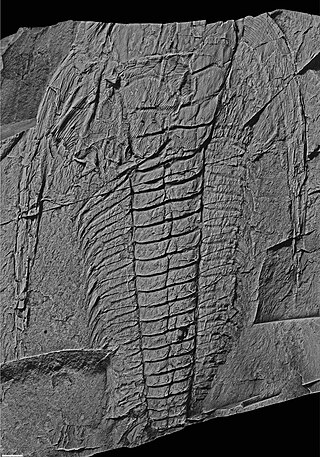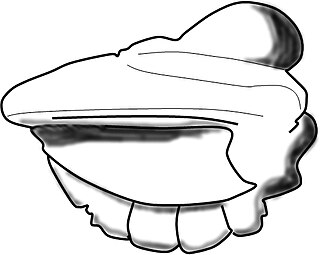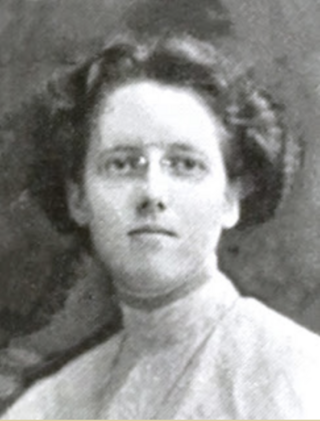Continental drift is the hypothesis that the Earth's continents have moved over geologic time relative to each other, thus appearing to have "drifted" across the ocean bed. The idea of continental drift has been subsumed into the science of plate tectonics, which studies the movement of the continents as they ride on plates of the Earth's lithosphere.

Trilobites are extinct marine arthropods that form the class Trilobita. Trilobites form one of the earliest known groups of arthropods. The first appearance of trilobites in the fossil record defines the base of the Atdabanian stage of the Early Cambrian period and they flourished throughout the lower Paleozoic before slipping into a long decline, when, during the Devonian, all trilobite orders except the Proetida died out. The last extant trilobites finally disappeared in the mass extinction at the end of the Permian about 251.9 million years ago. Trilobites were among the most successful of all early animals, existing in oceans for almost 270 million years, with over 22,000 species having been described.

Charles Doolittle Walcott was an American paleontologist, administrator of the Smithsonian Institution from 1907 to 1927, and director of the United States Geological Survey. He is famous for his discovery in 1909 of well-preserved fossils, including some of the oldest soft-part imprints, in the Burgess Shale of British Columbia, Canada.

John William Salter was an English naturalist, geologist, and palaeontologist.

Marie Tharp was an American geologist and oceanographic cartographer. In the 1950s, she collaborated with geologist Bruce Heezen to produce the first scientific map of the Atlantic Ocean floor. Her cartography revealed a more detailed topography and multi-dimensional geographical landscape of the ocean bottom.

Mary Antin was an American author and immigration rights activist. She is best known for her 1912 autobiography The Promised Land, an account of her emigration and subsequent Americanization.

Amadeus William Grabau was an American geologist, teacher, stratigrapher, paleontologist, and author who worked in the United States and China.

Eighteen Mile Creek is a tributary of Lake Erie located in southern Erie County, New York, United States. The creek is the second largest tributary of Lake Erie in New York State.

Chelediscus Rushton, 1966, is a genus of Eodiscinid trilobite belonging to the family Weymouthiidae Kobayashi T. (1943), Order Agnostida Salter (1864). The Treatise assigns this genus to the Calodiscidae; Cotton and Fortey (2005) however move it to the Weymouthiidae. Chelediscus lived during the later part of the Botomian stage.

Charles Emerson Beecher was an American paleontologist most famous for the thorough excavation, preparation and study of trilobite ventral anatomy from specimens collected at Beecher's Trilobite Bed. Beecher was rapidly promoted at Yale Peabody Museum, eventually rising to head that institution.

Edna Pauline Plumstead was a South African palaeobotanist, of the Bernard Price Institute for Palaeontological Research, University of the Witwatersrand, Johannesburg, where she graduated in 1924. Edna lived in Cape Town the first seven years of her life and that is where she would explore and find wild flowers in the Cape Peninsula. Plumstead would later on connect the wild flowers to the same one in places like Australia and South America when she would later on defend the continental drift. She first began defending the theory of continental drift in the 1950s and has been described as one 'of South Africa's foremost scientists in the field of Gondwana paleobotany and geology'. Plumstead was awarded the Chrestian Mica Gondwanaland Medal by the Geological Society of India, and was made a Fellow of the Royal Society of South Africa.
The Mary Clark Thompson Medal is awarded by the U.S. National Academy of Sciences "for most important service to geology and paleontology." Named after Mary Clark Thompson and first awarded in 1921, it was originally presented every three years together with a $15,000 prize.

Paleontology in Wisconsin refers to paleontological research occurring within or conducted by people from the U.S. state of Wisconsin. The state has fossils from the Precambrian, much of the Paleozoic, some a parts of the Mesozoic and the later part of the Cenozoic. Most of the Paleozoic rocks are marine in origin. Because of the thick blanket of Pleistocene glacial sediment that covers the rock strata in most of the state, Wisconsin’s fossil record is relatively sparse. In spite of this, certain Wisconsin paleontological occurrences provide exceptional insights concerning the history and diversity of life on Earth.
Christina Lochman-Balk was an American geologist who specialized in the study of Paleozoic era fossils, formerly known as Cambrian Paleontology. Lochman specifically dealt with Cambrian trilobites and invertebrates. During her career, it was not very common for women to pursue degrees or careers in geology, which was studied mostly by men. Along with her research, she also served as a lecturer and professor at the universities Mount Holyoke, University of Chicago and the New Mexico Institute of Mining and Technology. She received two degrees from Smith College in Northampton, Massachusetts in Geology, and her doctorate at Johns Hopkins University in 1933. She married Robert Balk in 1947, who was a geology professor at the University of Chicago. Following her husband's death in 1955, she became a full professor as well as appointed head of the geology department of the New Mexico Institute of Mining and Technology in 1957. She retired from her position in 1972.

The Precordillera terrane of western Argentina is a large mountain range located southeast of the main Andes mountain range. The evolution of the Precordillera is noted for its unique formation history compared to the region nearby. The Cambrian-Ordovian sedimentology in the Precordillera terrane has its source neither from old Andes nor nearby country rock, but shares similar characteristics with the Grenville orogeny of eastern North America. This indicates a rift-drift history of the Precordillera in the early Paleozoic. The Precordillera is a moving micro-continent which started from the southeast part of the ancient continent Laurentia. The separation of the Precordillera started around the early Cambrian. The mass collided with Gondwana around Late Ordovician period. Different models and thinking of rift-drift process and the time of occurrence have been proposed. This page focuses on the evidence of drifting found in the stratigraphical record of the Precordillera, as well as exhibiting models of how the Precordillera drifted to Gondwana.
Paul Tasch was an American paleontologist.
Elvira Wood was an American paleontologist who specialized in invertebrate paleontology.

Marjorie O'Connell Shearon was a palaeontologist from Newark, New Jersey. She earned a master's degree and a PhD from Columbia University. She wrote numerous scientific articles and named various species of ammonite fossils as Marjorie O'Connell, her maiden name before she married William Shearon in 1927.
Percy Edward Raymond was a Harvard professor and paleontologist who specialized in the evolution of trilobites and studied fossils from the Burgess shales within which a region is named as the Raymond Quarry. He was among the careful explorers of the apparent explosion of life forms in the Cambrian period.

The Windom shale or Windom member is a member of the Moscow formation in New York. It preserves fossils going back to the Givetian stage of the middle Devonian. The Windom shale is widely known for its high quality trilobite fossils.














